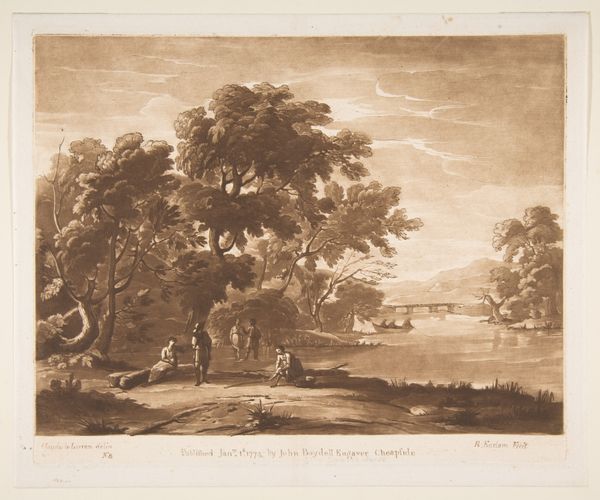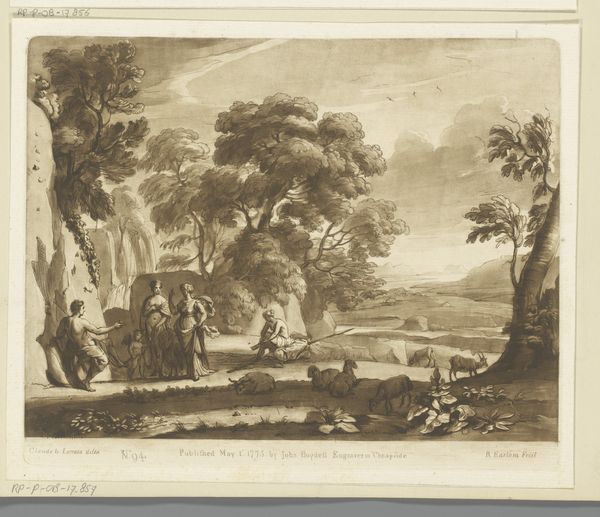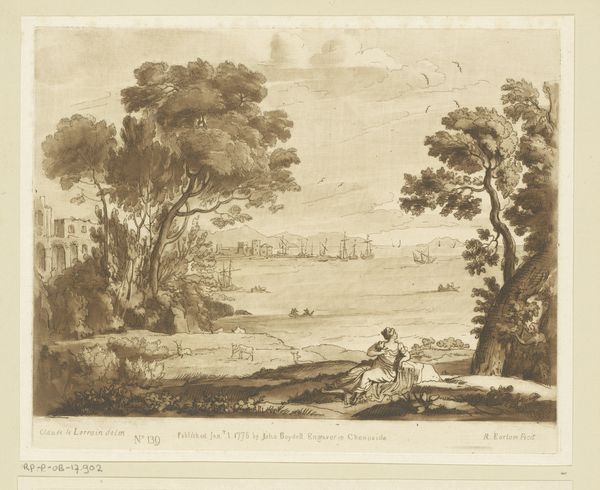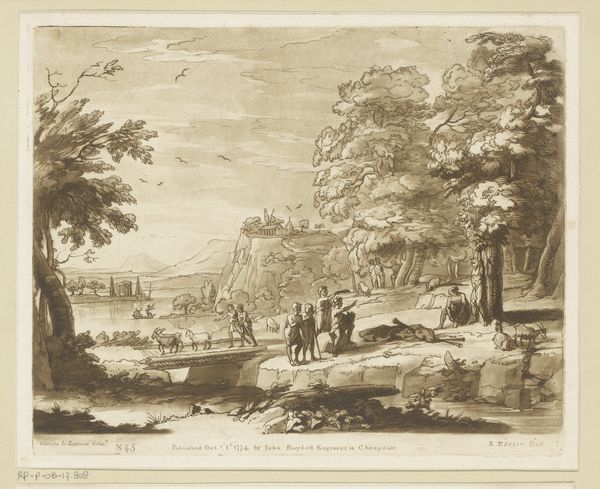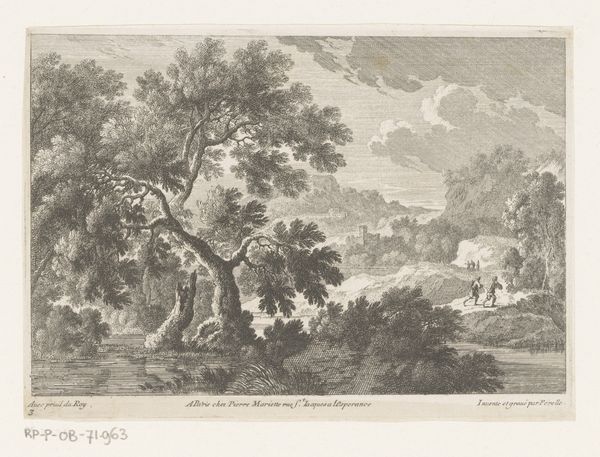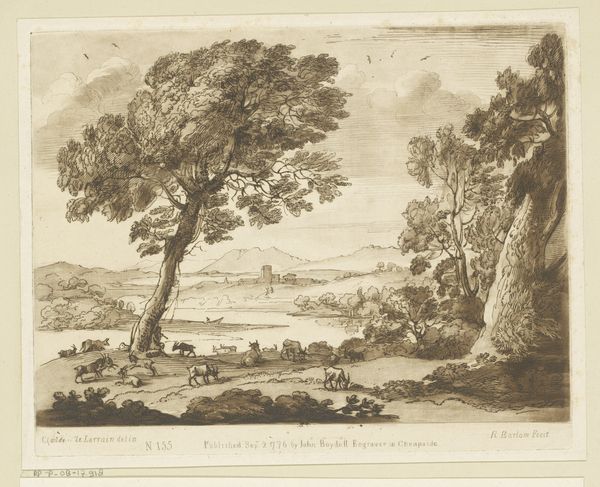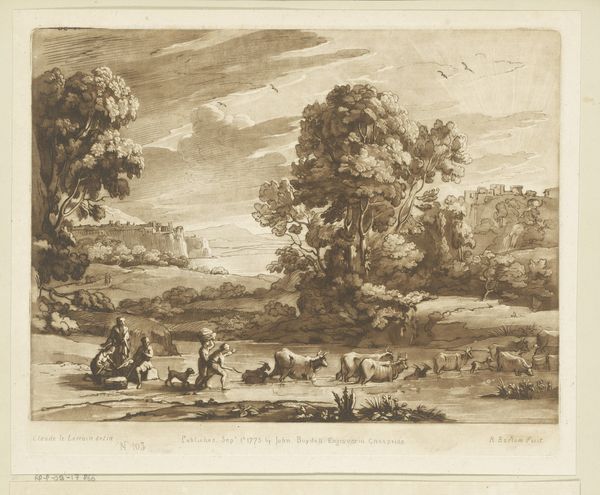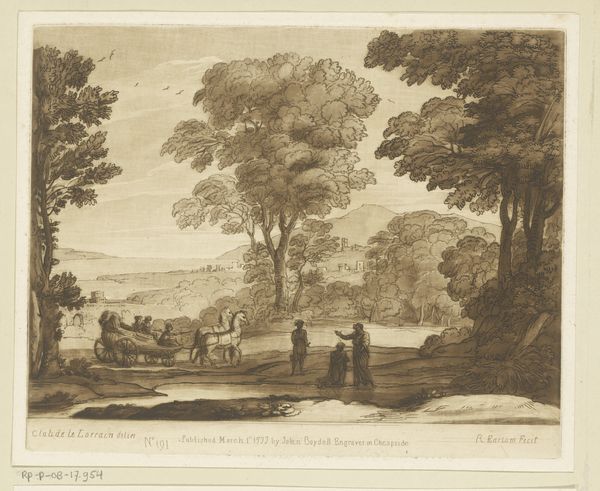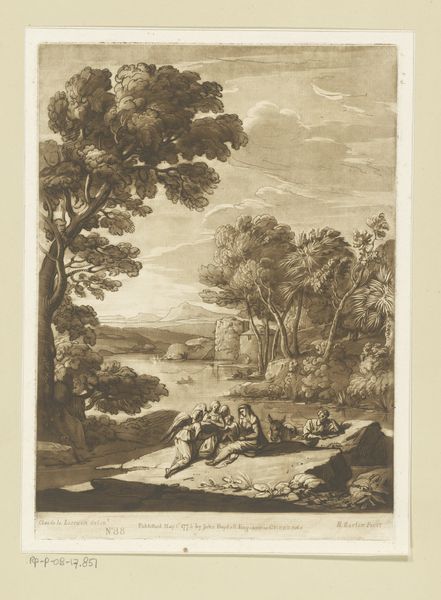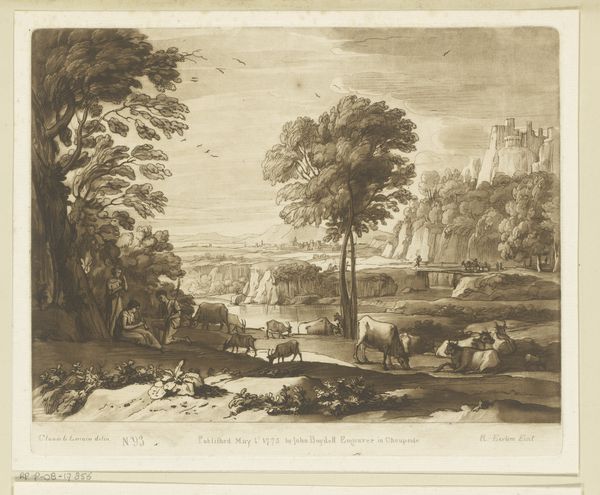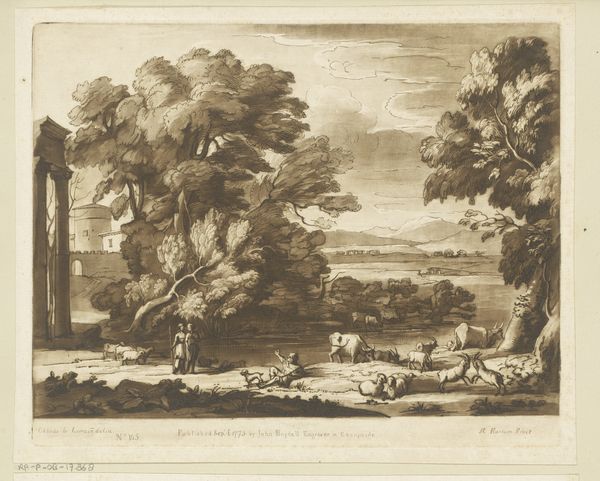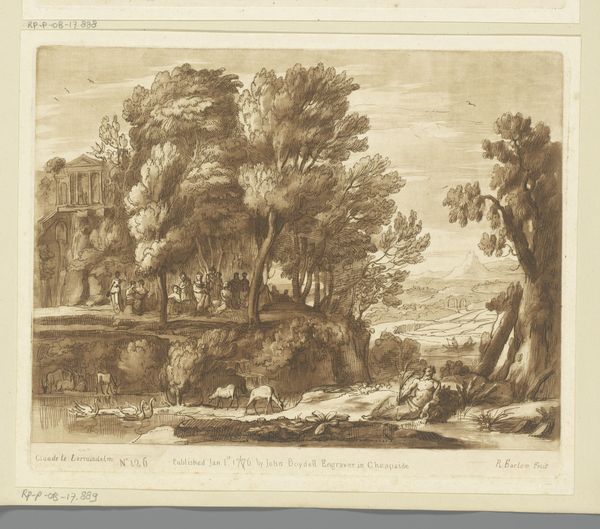
Dimensions: height 207 mm, width 258 mm
Copyright: Rijks Museum: Open Domain
Curator: Here we have "Landscape with the Flaying of Marsyas," a print, combining etching and engraving techniques, created possibly around 1775 by Richard Earlom, currently residing at the Rijksmuseum. It blends a tranquil pastoral scene with, shall we say, a rather brutal mythological subject. What strikes you initially? Editor: Well, beyond the obvious pastoral loveliness, there’s this... stillness. It's a horrific scene tucked away as if it’s perfectly normal – as if you stumble across this any given Tuesday. I find the juxtaposition unsettling and frankly, kind of darkly funny. Curator: Exactly. The historical context provides layers to that unsettling feeling. The story of Marsyas, a satyr who dared to challenge Apollo to a musical contest, and who paid a gruesome price for his hubris, has been interpreted in myriad ways throughout history. Some view it as a warning against challenging authority, others as a symbol of artistic freedom and resistance. Editor: Right! The artist gives us a landscape –cows placidly drinking in a stream!– and then *BAM* someone is literally being skinned alive in the foreground. Talk about your power structures. But the weirdness isn't just in the subject; it’s the…matter-of-factness, the casual way everything’s composed. It’s as if Earlom is saying, "Yes, tyranny exists, but life, horribly, beautifully, goes on". Curator: And within that “life going on”, it prompts reflections on artistic innovation and hubris – challenging established norms, and the severe consequences it may lead to when the socially vulnerable defies the established social authority.. I am drawn to how this connects with discussions around free expression, censorship, and the ever-present tensions between individual creativity and institutional power. Editor: It’s almost like he’s poking fun at those grandiose historical paintings, by smuggling something violent and transgressive into a bucolic scene. Makes you wonder, what power do images possess to reveal hard truths, and where the horror lies between violence, acceptance, and resistance? Curator: It really encourages thinking about this period's cultural obsession with mythological narratives as a means of addressing societal anxieties and questioning the role of art. Editor: Makes you look at those placid cows differently, doesn’t it? Maybe they're not so innocent after all... They know! Curator: Precisely! A deceptively quiet landscape, laden with disturbing undertones. Editor: A picture is worth a thousand screams… or, perhaps in this case, a quiet moo.
Comments
No comments
Be the first to comment and join the conversation on the ultimate creative platform.
